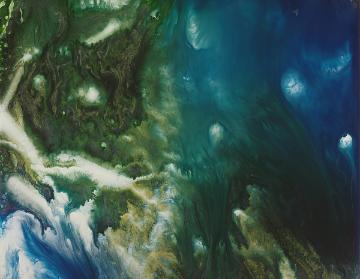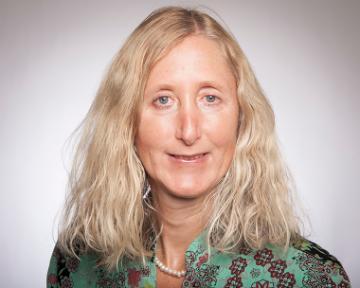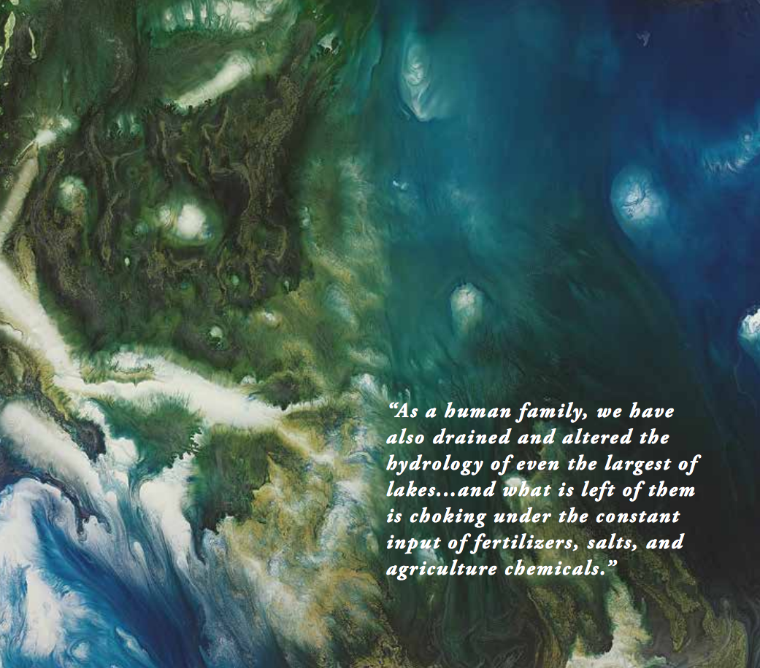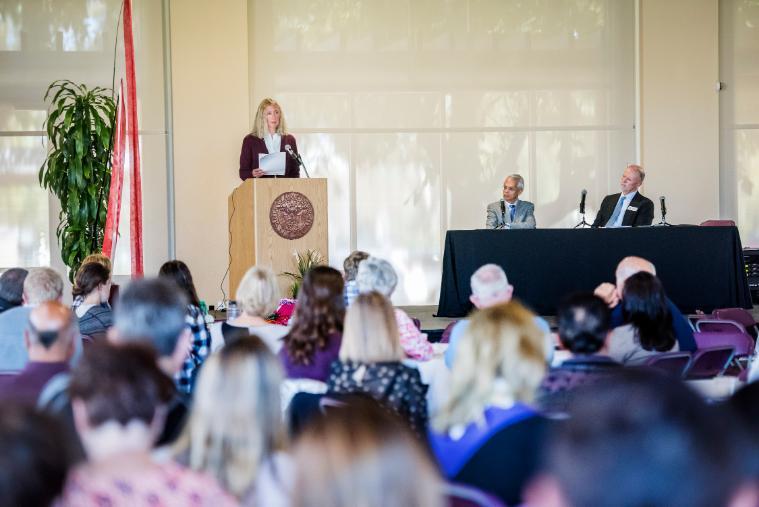
Greening the Growing Deserts: Reflections from a Hydrologist
Response to Veerabhadran Ramanathan’s Public Lecture,
“Our Future on a Shared Planet” Conference, Santa Clara University1
By Iris Stewart-Frey

By Iris Stewart-Frey
Associate Professor and Chair,
Department of Environmental Studies and Sciences,
Santa Clara University
Dr. Veerabhadran Ramanathan spoke with passion about the connections among scientists and faith leaders globally as we seek to bring the world together to address climate change. For my part, I want to examine this issue through a Santa Clara University lens—a lens focusing on the collective, committed work of the University, its students, staff, and faculty in building a more just, humane, and sustainable world, along with a growing awareness of how we use resources.
Santa Clara University’s Center for Sustainability partners with the wider campus community to provide residential laboratories on sustainable living here on campus. Our Miller Center for Social Entrepreneurship connects the campus community to marginalized communities worldwide, leveraging appropriate technologies and social entrepreneurship to transform lives and promote climate resilience. The School of Engineering’s sustainable energy initiative is furthering technology conversions. Santa Clara researchers are investigating how the climatic changes already underway are affecting the water cycle and water resources.
The effects of warmer temperatures on the water cycle are widely acknowledged to be among the most serious issues confronting humanity. Warmer temperatures increase evaporation rates and thus alter atmospheric water, clouds, precipitation patterns, and stream flow. Warmer temperatures also dry soils, melt glaciers, and cause precipitation that historically came as snow to fall as rain.

Keith Tyson, “Nature Painting,” detail, mixed media on aluminum, 2006, © Keith Tyson. All Rights Reserved, DACS 2016. Used with permission.
The combination of these processes means that now, and in the future, we can rely less on the historic availability of precipitation and must contend with floods and droughts that we have not experienced before. In California, recent studies have found that climatic changes are already influencing the frequency, magnitude, and duration of these droughts.
Even without climatic changes, we have altered our water supplies worldwide and in many cases irreversibly so. Groundwater resources that accumulated over decades, centuries, and millennia, have been mined to the point where water tables have taken a freefall and aquifers have permanently compacted. Loose or nonexistent regulation and monitoring continue to make this tragedy of the commons possible. Increasingly farmers and communities are sitting on dry wells. We only need to look as far as the Santa Clara Valley and the Central Valley of California for examples, but this story is repeated worldwide.
Around the globe we have dammed and altered the flow and natural functioning of rivers, draining wetlands—one of the great sources of biodiversity—and starving floodplains that bring nutrients to the surrounding areas with the goal of storing and diverting water into reservoirs to supply water to hungry cities and fields. As a human family, we have also drained and altered the hydrology of even the largest of lakes, like the Aral Sea and Lake Victoria. And what is left of them is choking under the constant input of fertilizers, salts, and agriculture chemicals.
The encyclical is a plea to truly hear, understand, and relieve the sufferings of the poor, who continue to bear the brunt of the burden of environmental degradation.
Ground and surface water sources have been greatly impacted by our collective industrial mining and agricultural activities. Many communities that rely on these compromised water sources suffer health consequences. Here in Silicon Valley the legacies of chip manufacturing are still in our subsurface water. There are the obvious examples of acid mine drainage leaching into the water supplies of remote Indian communities. More subtly, pharmaceutical residues permeate water sources everywhere.
And although the United Nations now has explicitly recognized a human right to clean drinking water and sanitation, for many communities this goal is increasingly elusive, even without climatic changes.
Clearly our mindset, policies, scientific investigations, and market-based incentives have not been sufficient to protect the fabric of the natural world that sustains us. And yes, many have pointed out to environmentalists that people are tired of hearing these doomsday messages. We are tired of saying them.
However, amid this continued exploitation, injustice, gridlock, and indifference, Pope Francis’ encyclical letter Laudato Si’ has been a transformational game changer. He is asking us to understand these realities and use the failure of our ability to address them as an impetus for a path forward.
In Laudato Si’, the Holy Father calls for an ecological conversion of all humanity. For a shift in consciousness from being the masters of the earth, entitled to plunder her at will, to one of caring and caretaking. Of a renewed understanding at the core of our beings that it is Mother Earth who sustains us and of whom we are a part. Pope Francis appeals to us not only for a change in technology, but a change in humanity. The encyclical is a plea to truly hear, understand, and relieve the sufferings of the poor, who continue to bear the brunt of the burden of environmental degradation.

Joanne Lee
Pope Francis calls us to question a rampant consumer mentality where life is on overdrive and everything has its price. Instead, he invites us to reconnect with the humanity within ourselves, with the Earth, and on a spiritual level inherent in all. That spiritual connection is not exclusively Catholic, and that spiritual connection is in harmony with the concepts and understandings of science and for scientists.
In this context, a sentence from the encyclical had a particular resonance with me as a scientist and as a hydrologist. “The external deserts in the world are growing, because the internal deserts have become so vast” (§217).
Dr. Ramanathan pointed out that a sustainable relationship with nature requires scientific and moral leadership. When we put our multidisciplinary heads together, powerful synergies evolve. To achieve these synergies we must be guided by our moral compass, rigor, empathy, and imagination. There are increasingly more of us that must share shrinking resources, and it is becoming increasingly harder to ignore the ethical questions that implies.
Climate, energy, and water are integrally linked—to each other and to questions of justice and our humanity. Laudato Si’ challenges us to explore these linkages with our heads, our hearts, and our souls to chart the course towards restoring life to those deserts that we have created.
Iris Stewart-Frey is associate professor in hydrology and the current chair of the Department of Environmental Studies and Sciences at Santa Clara University. Her research is focused on past and future impacts of climate change on water resources for humans and ecosystems. She is also interested in questions of water access and the development of adaptation responses to expected hydrologic changes. Stewart-Frey is currently working with an interdisciplinary team on a project examining food and water security under climate change for smallholder farmers in Nicaragua.
Notes
- Iris Stewart-Frey, “Greening the Growing Deserts: Reflections from a Hydrologist,” public lecture, Our Future on a Shared Planet: Silicon Valley in Conversation with the Environmental Teachings of Pope Francis conference, 4 November 2015, Santa Clara University.
|
Previous: Fighting climate change: A New Alliance between Science, Religion, and Technology |
Home | Next: Public Policy and the Environmental Teachings of Pope Francis |